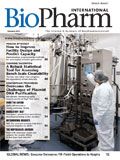QbD Gains Momentum
One might look at QbD's plodding growth and conclude that it is never going to make it to graduation.
Colleagues from other departments in my company sometimes ask what topics are hot in the field I cover. My answer always seems to start with, "Many of the same things that have been hot for the past four or five years . . ." As those who work in this area know, the science and regulation of drug manufacturing don't change very fast.

Laura Bush
The evolution of Quality by Design is no exception. The concept was born in 2002 with the US FDA's twenty-first century initiative. As we now enter the second decade of the new century, QbD seems to be coming out of early childhood and entering that difficult transition into adolescence.
We could look at QbD's plodding growth and conclude that it is never going to make it to graduation. I prefer to see the last eight years, however, as a necessary development process. We may think that our kids should grow up faster than they do (who hasn't wished that a teenager would act more mature?). But as we all know, wishing won't make that happen.
The same holds true for a concept as big as this one. Yet, we have seen important progress. Industry now seems fairly comfortable with certain core aspects of QbD, particularly in terms of what it means to carry out product and process development in a QbD framework—what studies to carry out, how to determine critical quality attributes (starting from the patient's needs), how to take advantage of design of experiments (DOE), even how to develop a design space.
This understanding has resulted from intensive work—within company walls, and through cross-company collaboration and industry–regulator dialogue—and has laid the foundations for the next phase in QbD's development. In that next stage, several big challenges remain to be sorted out, including:
1. How to file. How do you clearly demonstrate your product and process understanding? How much information should you provide?
2. Lifecycle management. How will process validation, change control, deviations, and inspections be managed in a QbD environment? How will regulatory commitments be defined? How much flexibility will companies have to make postapproval changes without regulatory filings? (See my January editorial).
We are now at an exciting juncture for QbD. The QbD Working Group of the PhRMA Biologics and Biotechnology Leadership Committee has published its white paper, the CMC Biotech Working Group has released its 278-page A-MAb case study, and EFPIA is progressing on its mock CTD S2 and P2 filings. These groups have approached the goal of advancing QbD from different angles, and thus are contributing to the overall effort in complementary ways. Meanwhile, of course, two major regulatory efforts also are underway—ICH Q11 on applying QbD to biologics and the FDA QbD pilot for biologics.
In the coming year or two, through public workshops and meetings, the industry and regulators will begin, collectively, to digest all the recent efforts and start to figure out how to take the next steps forward, particularly on the tricky pending issues mentioned above. And I am confident that from all this effort, will we see important progress toward getting QbD out of school and into the real world.
P.S. Learn more about the latest in thinking on QbD through our new podcasts and webcasts. On our web site, click on the podcast and webcast links.
Laura Bush is the editor in chief of BioPharm International, lbush@advanstar.com

VERAXA and Voyager to Create Combined Business for Advancing Pipeline of Next-Gen Cancer Therapies
April 23rd 2025The proposed business combination would create a publicly traded, clinical-stage biopharmaceutical company that will focus on developing a pipeline of next-generation cancer therapies.
MHRA Approves GSK Therapy Combinations for Multiple Myeloma
April 21st 2025Belantamab mafodotin is approved in combination with bortezomib plus dexamethasone in patients who have had at least one prior therapy, and in combination with pomalidomide plus dexamethasone for those who have had a prior therapy including lenalidomide.